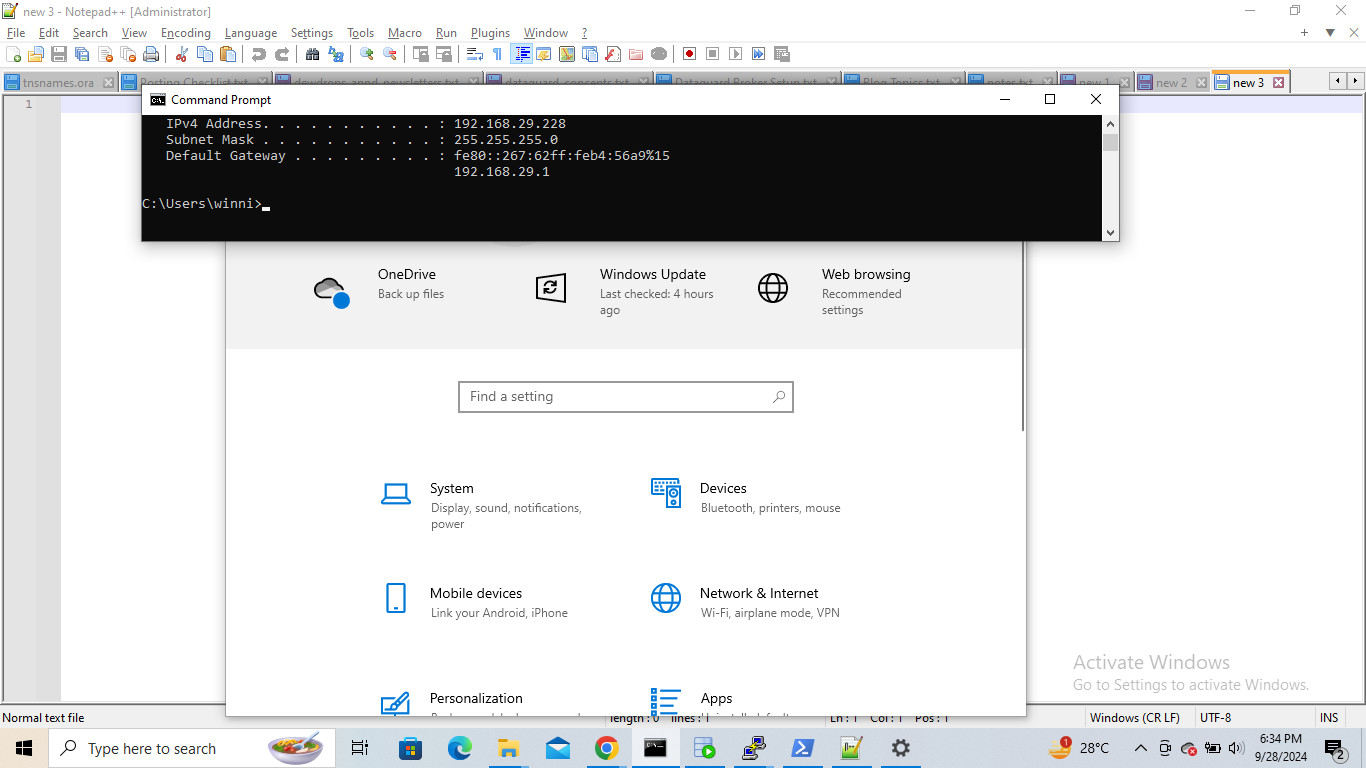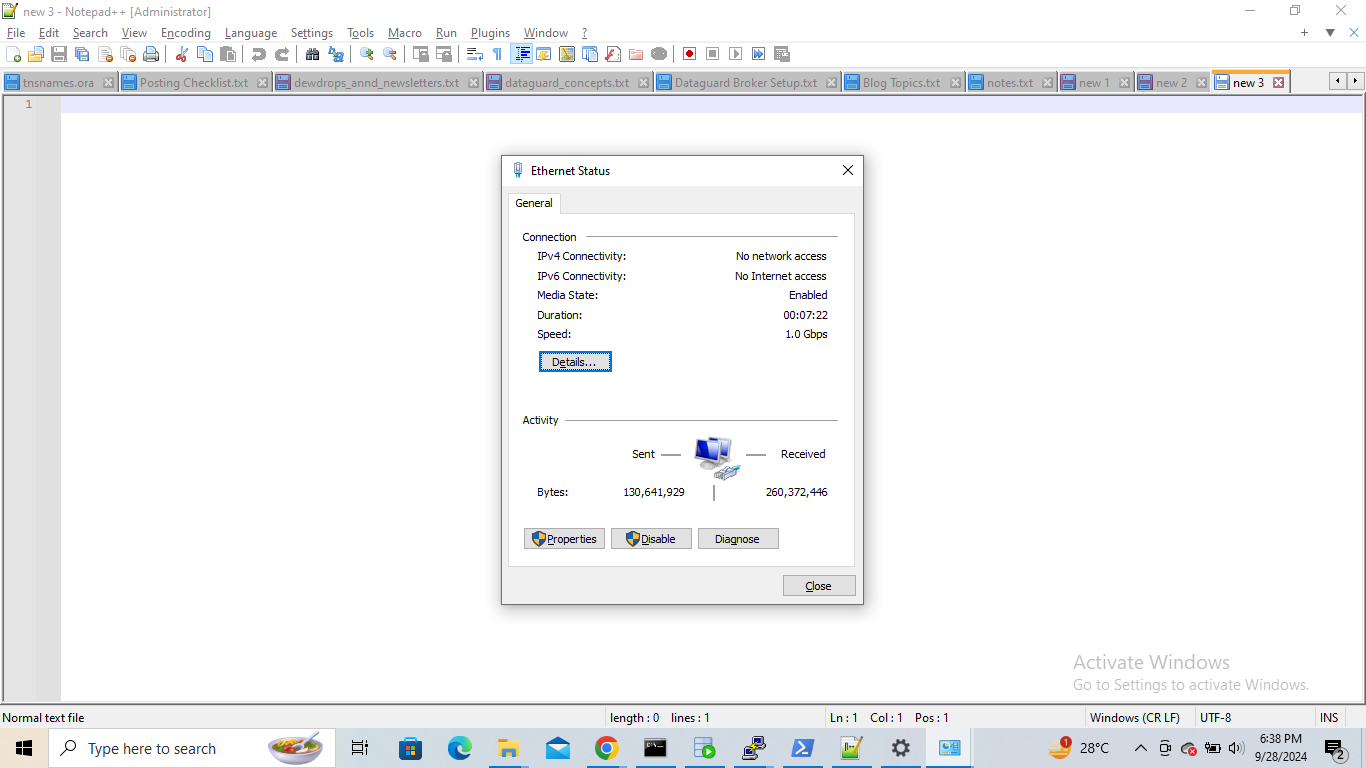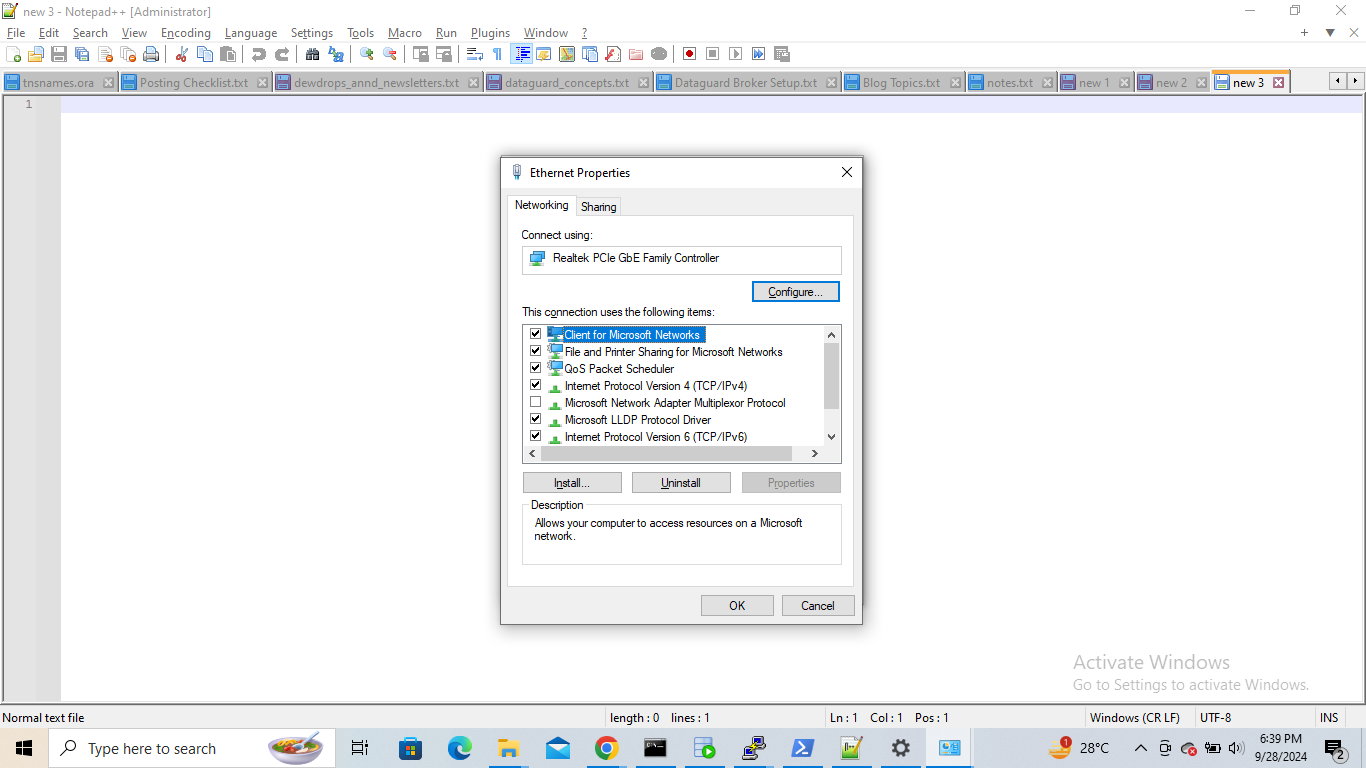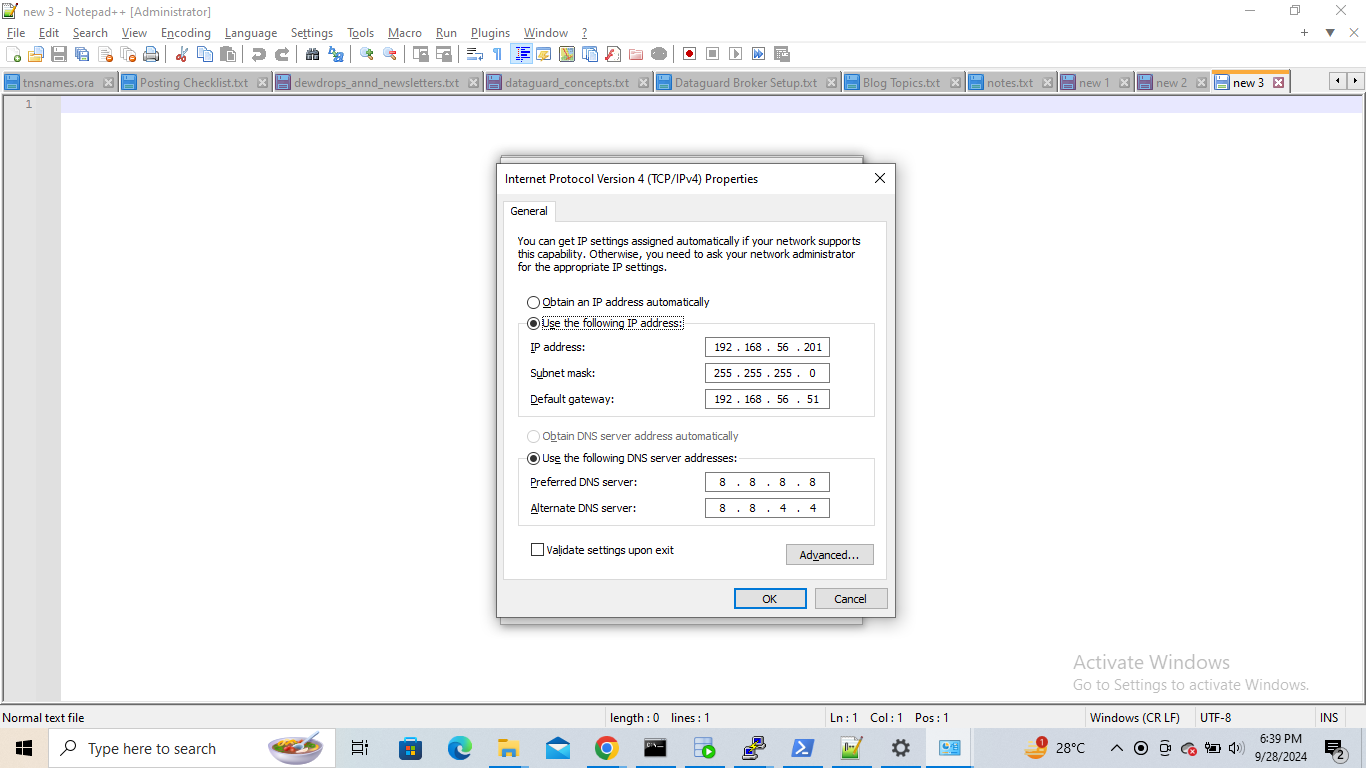Below are detailed steps to connect to linux server from windows
Setup Static IP Address on your local windows machine
On Windows 10
Go to settings -> Network and Internet -> Ethernet -> Change adapter options -> Ethernet -> Properties -> Internet Protocol Version 4 (TCP/IPv4) -> Properties
Click on
Use the following IP address
IP Address - 192.168.56.201
Subnet Mask - 255.255.255.0
Default Gateway - 192.168.56.51
Click on
Use the following DNS server addresses
Preferred DNS server - 8.8.8.8
Alternate DNS server - 8.8.4.4
IP Address - 192.168.56.201
Subnet Mask - 255.255.255.0
Default Gateway - 192.168.56.51
Click on
Use the following DNS server addresses
Preferred DNS server - 8.8.8.8
Alternate DNS server - 8.8.4.4
Click on checkbox Validate settings upon exit, ok and apply
Open a command prompt and verify the IP is showing as per setup
cmd> ipconfig
Assign a static ip address to linux machine. Details are in link below
Assign a static ip address to the linux machine
On the linux machine you will need to install openssh-server
# yum install openssh-server
Once the static ip is setup on both the machines and the ethernet cable is connected restart both the machines.
Now from the windows machine cmd prompt if you ping the linux machine ip you should get a reply.
C:\Users\winni>ping 192.168.56.102
Pinging 192.168.56.102 with 32 bytes of data:
Reply from 192.168.56.102: bytes=32 time=1ms TTL=64
Reply from 192.168.56.102: bytes=32 time=1ms TTL=64
Reply from 192.168.56.102: bytes=32 time=1ms TTL=64
Reply from 192.168.56.102: bytes=32 time=1ms TTL=64
Ping statistics for 192.168.56.102:
Packets: Sent = 4, Received = 4, Lost = 0 (0% loss),
Approximate round trip times in milli-seconds:
Minimum = 0ms, Maximum = 1ms, Average = 0ms
C:\Users\winni> ssh oracle@192.168.56.102 -X
oracle@192.168.56.102's password:
Activate the web console with: systemctl enable --now cockpit.socket
Last login: Mon May 27 21:17:29 2024 from 192.168.56.201
[oracle@oraclelinux ~]$
1. Download and install Xming on Windows.
2. Install putty on windows
3. As root user update /etc/ ssh/sshd_config file in linux and restart ssh daemon
4. Install X11 GUI components on linux , including xterm and/or xclock
5. Test the xterm/xclock GUI widget
Step 1
Download Xming from below site
sourceforge site to download XmingInstall Xming-6-9-0-31-setup.exe as per the default installation steps.
During the installation accept the defaults and when you finish the installation Xming will be running in the background.
Step 2
Download putty from the putty.org website.
Putty is an SSH and telnet client.
In Connection -> SSH -> X11
Click on enable X11 forwarding
In X display location enter localhost:0.0
In Session tab add the following
In hostname (or IP address) - 192.168.56.102
Port - 22
Connection Type - SSH
Save and load the settings.
With this setting login to the linux server as a suitable user as "oracle"
and verify the DISPLAY environment variable
[oracle@oraclelinux ~]$ echo $DISPLAY
localhost:10.0

AllowTcpForwarding yes
AddressFamily inet
X11Forwarding yes
X11UseLocalhost yes
systemctl restart sshd.serviceyum install xterm

This setup is very useful to do a GUI based database installations on your linux server or to start sqldeveloper running on linux from you windows client.
References
Using Putty and ssh with Xming X11 Forwarding from Windows to display a remote GUI running in Linux
Thought for the day
Let everything that has breath praise the Lord.
Praise the Lord.
Psalm 150:6








No comments:
Post a Comment